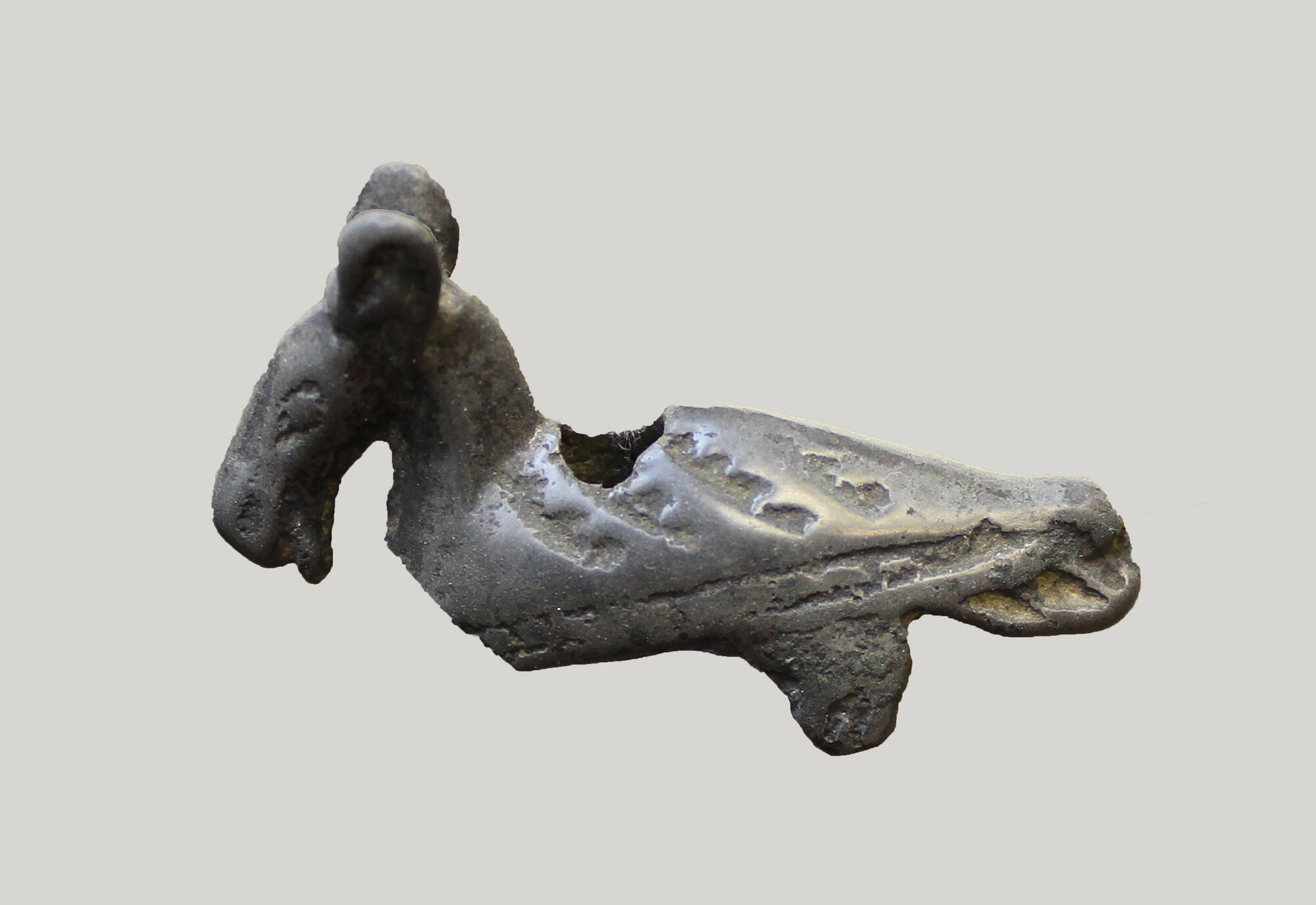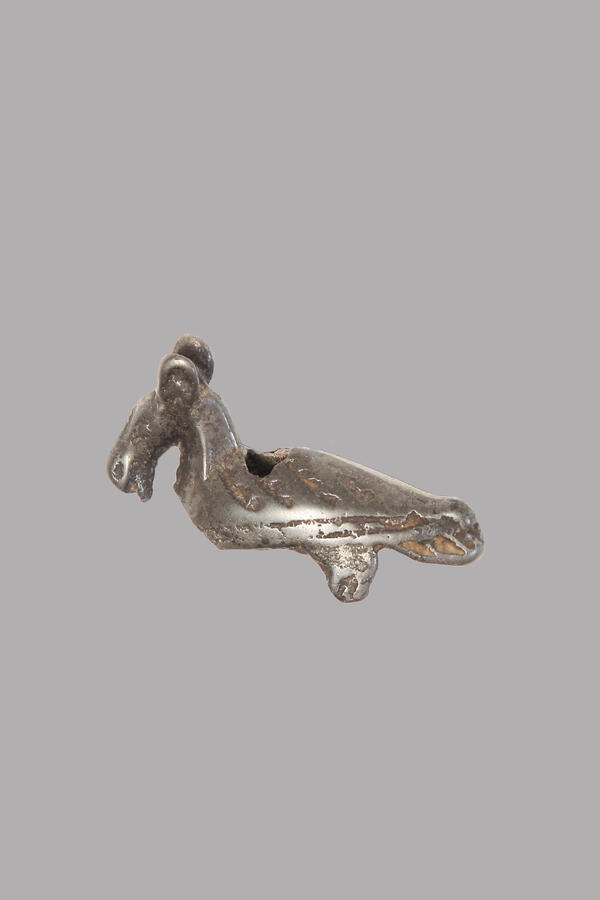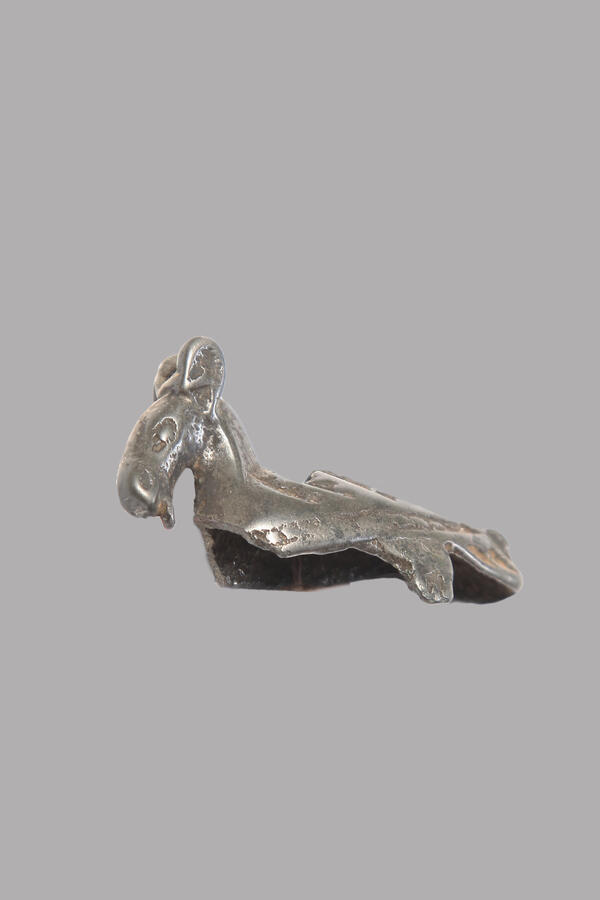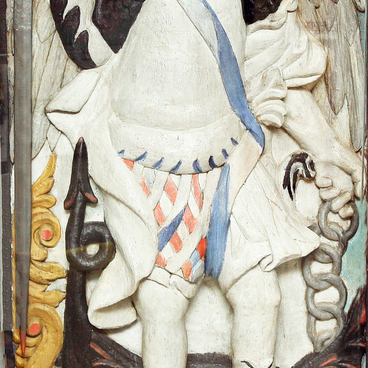A pronizka (a charm bead) is a small hollow item with a through hole, which was strung on a lace to decorate clothing and hair. Women wore such charm beads as part of adornments on temples, plaits and waists, while men used them only for belt ornaments. The modern analogues of pronizkas are beads, pearls and bugles. The pronizka from the collection of the Komi-Permyak Local History Museum depicts a mythological creature with a duck’s body and an elk’s head. On top of the charm bead there is a through hole for an attaching lace. The proznizka was found at the Plyosinsky burial ground in the Perm region, a monument of the Lomovatovsky culture, in 1961.
The elk is one of the central images in the art of the Perm animal style, along with the human and the bird. As the Komi people saw it, the intermediaries between humans and gods were people with wings and an elk’s head. On cult objects and personal amulets, they were often depicted above the lizard, the protector of the underworld. In the North, there are legends about the golden-horned Meandash, the son of a man and a deer, the light deity who taught man to hunt.
In the Perm animal style, there are more items depicting parts of different living creatures rather than the whole beast. Images of the elk and the duck first appeared in the Neolithic period, and this is displayed in the scenes of petroglyphs — rock paintings — and in the patterns on the earthenware. The tribes living in the forest belt worshiped the elk and the waterfowl as sacred totems.
Ethnographers recorded an ancient myth of the Mansi people about the Cosmic Hunt, where the elk is represented by the Big Dipper’s bucket and the hunters are the three stars of the bucket’s handle. The constellation of the Big Dipper is located in the Milky Way, which was called “Lud zazeg surres” — “Migratory Birds Route” or “Goose Route”, and was also known as the ski track for the Celestial Elk hunter. The heavenly mythological pantheon united these animals, while on earth they were considered game animals crucial to human survival and daily life.
The elk was the patron and protector of people on earth, and the duck was a symbol of fertility and prosperity. Their combined image as one creature doubled the protective power of the amulet. The elk’s head on this piece bears no horns, which means that the ornament belonged to a woman.
The elk is one of the central images in the art of the Perm animal style, along with the human and the bird. As the Komi people saw it, the intermediaries between humans and gods were people with wings and an elk’s head. On cult objects and personal amulets, they were often depicted above the lizard, the protector of the underworld. In the North, there are legends about the golden-horned Meandash, the son of a man and a deer, the light deity who taught man to hunt.
In the Perm animal style, there are more items depicting parts of different living creatures rather than the whole beast. Images of the elk and the duck first appeared in the Neolithic period, and this is displayed in the scenes of petroglyphs — rock paintings — and in the patterns on the earthenware. The tribes living in the forest belt worshiped the elk and the waterfowl as sacred totems.
Ethnographers recorded an ancient myth of the Mansi people about the Cosmic Hunt, where the elk is represented by the Big Dipper’s bucket and the hunters are the three stars of the bucket’s handle. The constellation of the Big Dipper is located in the Milky Way, which was called “Lud zazeg surres” — “Migratory Birds Route” or “Goose Route”, and was also known as the ski track for the Celestial Elk hunter. The heavenly mythological pantheon united these animals, while on earth they were considered game animals crucial to human survival and daily life.
The elk was the patron and protector of people on earth, and the duck was a symbol of fertility and prosperity. Their combined image as one creature doubled the protective power of the amulet. The elk’s head on this piece bears no horns, which means that the ornament belonged to a woman.



